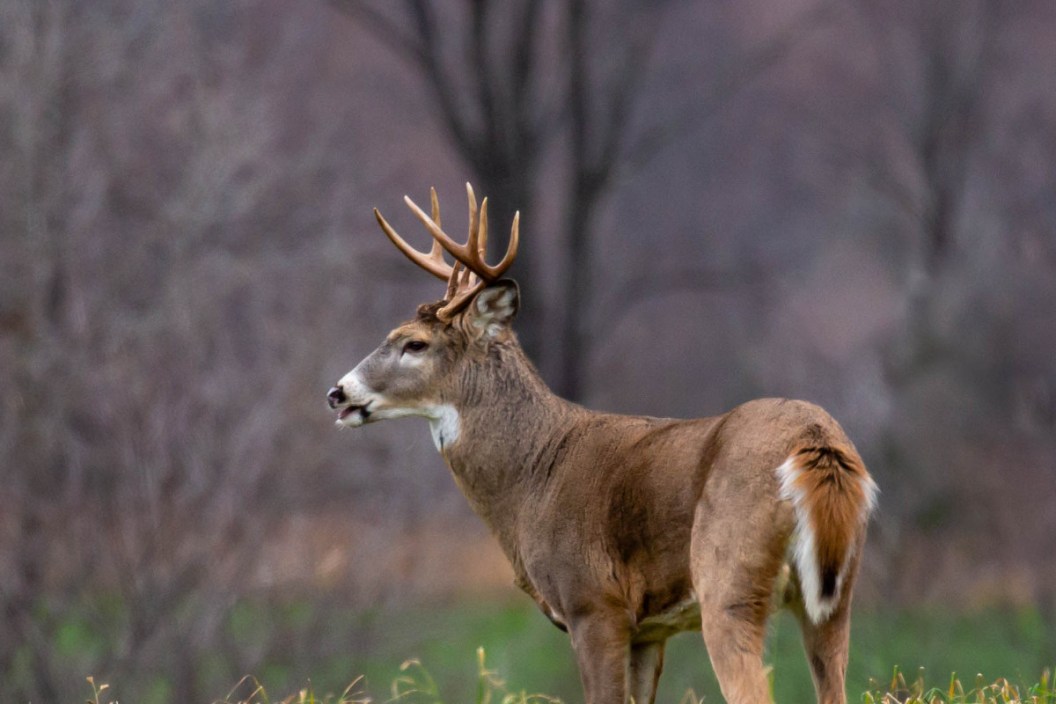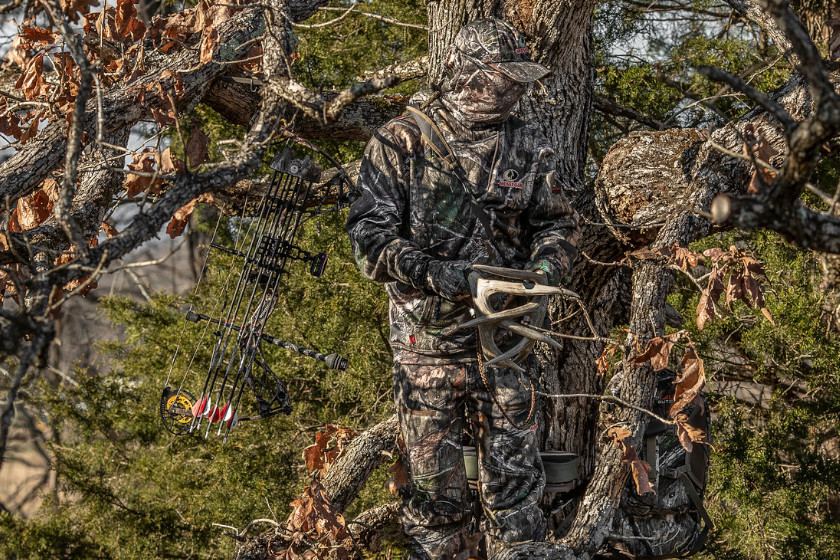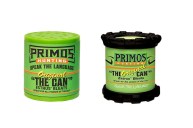Our editors independently select products featured on Wide Open Spaces. However, we may earn a commission when you buy something through our links.
Whitetail deer are more vocal than many hunters give them credit. There's a whole range of vocalizations these amazing animals use to convey information to one another. However, the one everyone knows is the buck grunt. After all, game call companies make a fortune selling grunt calls every year to hopeful hunters. However, few will probably succeed in fooling a mature buck into thinking he's a rival challenger looking for a fight. Properly replicating any deer call also means understanding what you're saying first. Otherwise, what you're hoping to convey to the deer might be lost in translation. Today we'll talk a little bit about what buck calls mean, giving you a better understanding of what call to use and when. It'll give you the best odds of pulling that big buck into range on a string. We'll also provide some of our recommendations for the best calls currently available on the market.
The Types of Grunts and Their Meaning
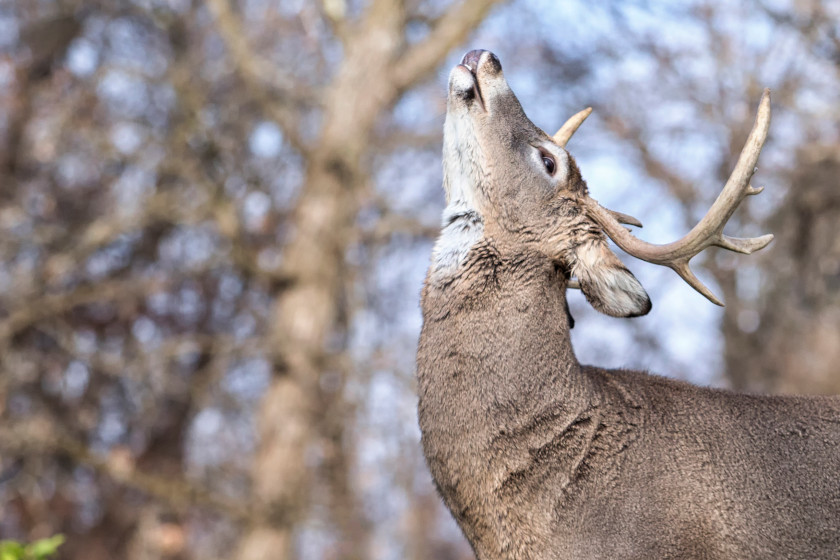
Lynn_Bystrom via Getty Images
We should note that both bucks and does do grunt to some degree. It's a low, fast "urp" sound that's quite subtle and easy to miss unless the animal is close. In truth, it took years before I noticed deer making these sounds. A basic grunt roughly translates to "hello," or "here I am." It's a way of greeting both bucks and does. I have noticed the buck grunts are more guttural than the does, which have a more nasally whine.
If you hear a buck grunt outside of the rut, they are likely making some social greeting. However, it's the breeding season calls that most hunters concern themselves with. One of the most common grunts you'll hear is a chasing or trailing grunt. Everyone has a different name for it, but the sound is the same. I watched a young buck make this sound during a hunt last night. The small 4-pointer walked up to a group of does, put his head down, and went "urp-urp-urp" and started chasing them. The buck is dropping his best pickup lines to the does, who, I might add, were uninterested in this little buck and immediately ran off. Either way, this is easy to emulate with a grunt call. Just give a short series of short, quick "urp" sounds in quick succession. This grunt is usually going to work best in a pre-rut scenario before the does start coming into estrus.
The other grunt you're most likely to hear while deer hunting is a tending grunt. It's longer and more of an "urrrrrp" sound. The best we can tell, the buck is uttering this sound for a few reasons. Our best guess is that the buck is excited, and he's letting the doe know about it. Second, these aggressive grunts are probably meant to warn rival males. He's saying: "Stay away. She's mine!" Most deer grunt calls can readily replicate this sound simply by blowing longer on the call, although you'll want to test at home first and make sure. This can be a deadly combo in conjunction with a deer bleat call and decoys. It can make a buck think there's an opportunity to steal another buck's gal and bring him in looking for a fight. This is a call you'll want to save for the rut itself.
The last type of grunt is infrequently heard by deer hunters and goes by many names. We've heard it called a "buck roar," a "buck bawl," "rut roar," and many others. Whatever you want to call it, this is a series of highly aggressive grunts with a mixture of deep guttural tending-style grunts and a higher-pitched "bawl" sound. Our best translation guess is that this grunt is only used by bucks who are either spoiling for a fight or frustrated because they're with a doe who hasn't let them breed. You will need a particular grunt tube for this call, as most standard grunt calls can't produce the cadence and varying pitches required. Most hunters agree this is a call you shouldn't throw out anytime. It's rarely heard in the wild-save it for an emergency scenario on a buck that's ignored all other calls and who may walk away from you. Again, you should keep this call for the rut only.
What Is the Best Way to Use a Grunt Call?
The ideal way to use any hunting call for most scenarios is to space out your sequences. You shouldn't just constantly blare on the grunt call, but you shouldn't get discouraged if your first sequence fails to attract. While blind calling, the best scenario is to usually do two to three quick grunts, drawing them out just a hair. Space these sequences 15 to 20 minutes apart. When it's November, don't be afraid of overcalling. When the rut is on, all bets are off. The bucks are cruising. They're looking for a fight or does. All it takes is one buck wandering within your earshot to turn around a hunt in a hurry.
That said, you do want to use caution to look around you first to ensure no deer have snuck in behind you. Deer, especially mature bucks, can be sneaky. I'll never forget the old, gnarly 10-point I shot in 2013 that I didn't see until he was 40 yards from me. He was old, wise, and moved whisper-quiet through the woods. Knowing that you don't want to call when a deer is close can inevitably give away your position.
Grunts can be effective, but you can mix in an estrus bleat or two if you want to add to the illusion. A set of rattling antlers or a rattle bag can also be great, especially in a pre-rut scenario. You might fool that big boy into thinking he's stumbled upon a fight for the first hot doe of the season. He may try to come in and steal her from the bucks who are fighting.
If you are grunting at a far-off deer that looks like he may leave the scene, hit him with a series of trailing or tending grunts. If he ignores those, hit him with the buck roar. Whatever you do, stop calling once the deer has turned and is heading your way. He's already taken the bait, and you want him to come in and start searching. Calling too much will give away your position. Look at some of our top picks for grunt calls today.
1. The Best Affordable Grunt Call
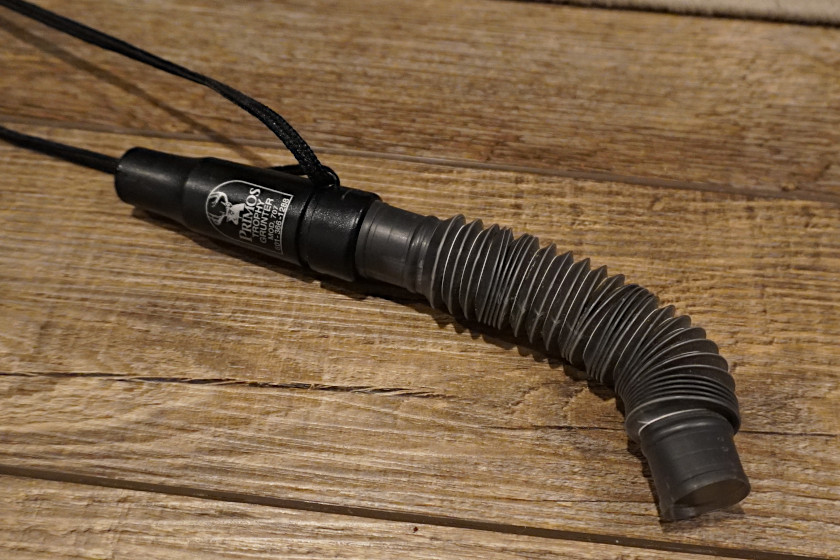
Travis Smola
Primos Trophy Grunter - Amazon, $14.99
Pros:
- Simple, durable design
- The adjustable tube allows for a range of tone
Cons:
- The sound is not quite as realistic as other options
- It may not be reliable in the bitter cold
Primos Hunting is known as one of THE names in hunting calls, and the Trophy Grunter is a classic. I've owned mine for over a decade, and it is still strong. I haven't been gentle with this call. I've thrown it around, dropped it out of trees, and have it stuffed at the bottom of a bag under other equipment. The thing still produces a range of tones, so you can replicate everything from simple trailing grunts to tending grunts. There are a couple of downsides. For one, I've noticed it doesn't perform as well in the cold of November and early December in Michigan. I think this is due to the reed freezing up. This shouldn't be a concern if you're in a warmer climate. I only noticed this at temperatures below 30 degrees Fahrenheit. The other downside is that the sound isn't quite as realistic as other options on the market. However, this call is built well, and it's affordable. For only $15, this is the perfect starter option for anyone looking to get into calling deer.
2. The Best "Roar" Call

Travis Smola
Flambeau Mad Hyper Growl - Amazon, $22
Pros:
- Deep, guttural grunts
- Pitch-perfect buck roars
- Great in the cold
Cons:
- It might be too aggressive for some scenarios
- Large size is a bit cumbersome
This is another call I've owned for about ten years, and it is still going strong after all that time. I own a slightly older version of this call. Flambeau has since added a "hyper ventilator tube," which is supposed to simulate the air going in and out of a deer's nostrils, creating a more realistic sound. It's a nice feature to this buck grunt call, but I can safely say I thought the sound was rich and guttural, to begin with already. You control the intensity of this one more with how much air you're blowing through it than the grunt tube itself. It works effectively for a range of pitches. Blow softly for tending grunts and more aggressively for roar. The only downside is that I've concluded it may be too aggressive for Michigan deer. If our buck-to-doe ratio was a little more even, I think it'd perform better. It's also a bit large to be dangling around your neck all day. However, this is an excellent call for when the temperatures drop. I've not once had a problem getting the exact sound I wanted for the situation with this call.
3. The Most Compact, Multi-Use Call
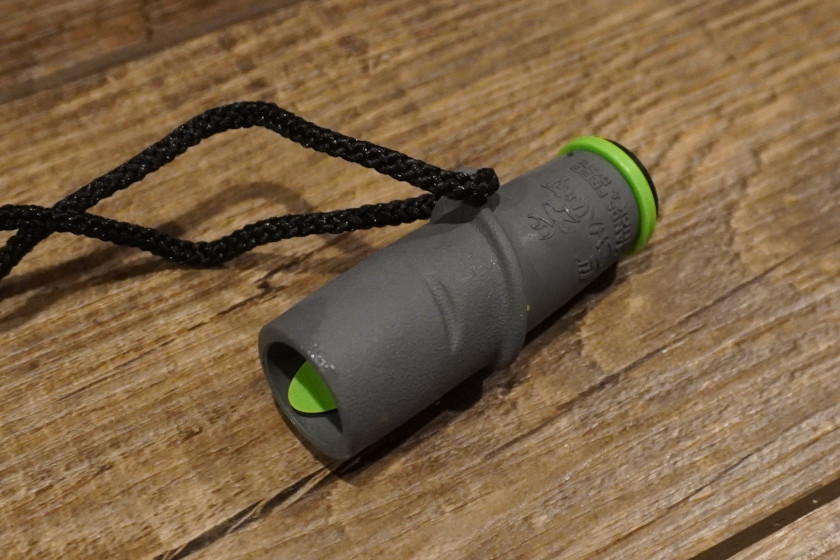
Travis Smola
Primos Lil Shawty Hands-Free Deer Call, Sportsman's Warehouse, $12.99
Pros:
- Extremely compact
- Hands-free use
- Multiple calls in one
Cons:
- Not as loud as a traditional call
- Extra, easy-to-lose plastic pieces
This one is a new addition to my deer hunting arsenal. I was intrigued by the small size and versatility of having five calls in one. The "Lil Shawty" can quickly be adjusted to make five different deer sounds. These include a buck grunt, a young doe, a doe grunt, a standard doe bleat, and an estrus bleat. You switch between them by moving an O-ring to different spots on the reed. It's essentially an all-in-one solution for hunters who like to keep things light and straightforward. This is great because I already have way too much gear that I tote in the woods. Plus, the short size means you could easily hold this in your mouth to stop a deer while shooting with a bow. There are some downsides, though. For one, the calls are not as loud as traditional tubed calls. Secondly, Primos made a weird design choice with the plastic part that holds the end of the reed. If the black plastic end slips off, two green pieces have the reed in place that aren't glued or fastened together. I dropped this tiny plastic piece while adjusting the call in my treestand, rendering it worthless until I got down and retrieved it after the hunt. I did use this in sub-30-degree temperatures with no loss in sound quality, though. And for $12, you're getting a lot of versatility for your money in a highly compact package, making the Lil Shawty worth a look.
4. The Best Adjustable Buck Call

Walmart
Illusion Systems Extinguisher - Walmart, $25-$35
Pros:
- Adjustable multi-call
- Freeze resistant features
Cons:
- Expensive compared to other calls
I haven't used this personally, but I know plenty of hunters who have. The cool thing about the Extinguisher is that Illusion Systems put an adjustable slider on the side to move the O-ring that adjusts the pitch on the reed on the exterior of the call. No pulling the call apart to change things up. You can hit some perfect doe bleats, adjust the slider, and add some grunts to complete the illusion. This call also does fawn bleats quite well. I like that the slider helps quickly break up any moisture freezing inside the call before you use it, ensuring you can hit those perfect pitch grunts when you need them the most. The only real downside is that at $25 to $35, depending on whether you choose the camo or plain black version, it's a little expensive compared to some of the other options currently on the market.
5. The Fastest Multi-Call

Academy Sports
Flextone Buck Collector Plus - Academy, $19.99
Pros:
- Full Range of whitetail sounds from one call
- The soft body is easy to manipulate for varying sound
Cons:
- Price
This call utilizes what Flextone calls "Tru-Touch" buttons to quickly adjust the types of sounds you'll get from it. This makes for a fast way to switch between the call types and make a realistic sequence that should fool the wariest of big bucks. It's nice to have all this hanging from a single lanyard too. They purposefully built this call with a soft exterior. The whole idea here is that it produces a more natural, rhythmic sound like the naturally soft organs of a whitetail would. This call does everything from grunts to growls and fawn and doe bleats. It also does a snort wheeze for hunters who want to mix those into their routine. At $20, it is one of the more expensive options out there, which is one of the only downsides we have for this option. Flextone is instead a trusted name in the deer hunting space, so this is one you can't go wrong with.
For more outdoor content from Travis Smola, follow him on Twitter and Instagram. Check out his Geocaching and Outdoors with Travis YouTube channels for original videos.
